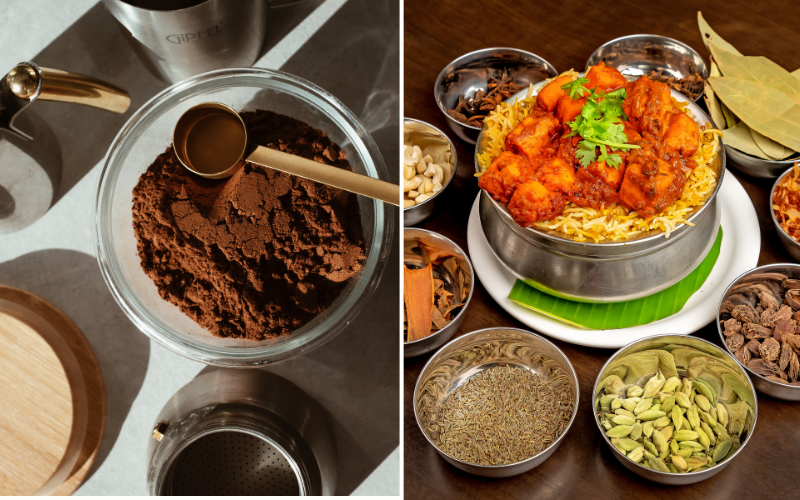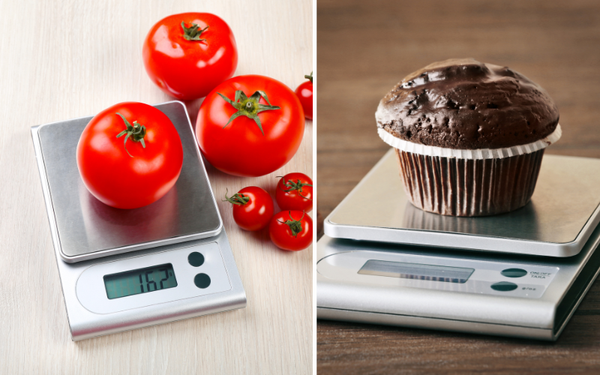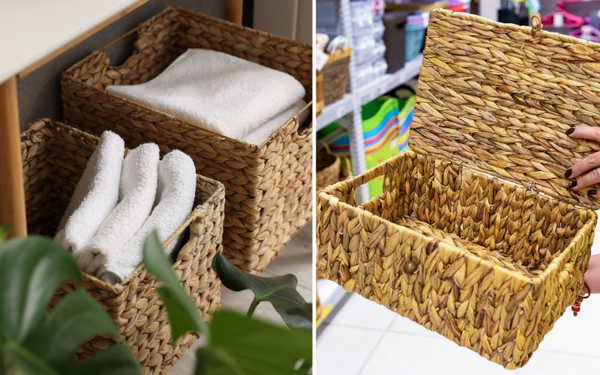If you’re asking ‘is it ok to store food in stainless steel,’ rest assured, you’ve chosen one of the most reliable materials for your culinary needs. Known for being durable and non-reactive, stainless steel is generally a safe bet for food storage. This guide unpacks key considerations, such as grade selection and maintenance tips, to help you store food safely and enhance your kitchen practices.
Key Takeaways
- Food-grade stainless steel is considered safe for food storage, meeting FDA guidelines for durability, corrosion resistance, and ease of cleaning, and is preferred over plastic containers that may leach harmful chemicals.
- Stainless steel containers offer advantages over plastic, glass, and ceramic containers due to their durability, non-reactivity, and resistance to corrosion and odor retention, although some consideration is needed for storing certain types of foods like acidic or alkaline foods.
- Proper care and maintenance of stainless steel containers include using non-abrasive cleaners and following manufacturer’s instructions, with most being dishwasher safe and designed to prevent bacterial growth, which extends their lifespan and maintains sanitary conditions.
Understanding Stainless Steel: Food Grade and Safety
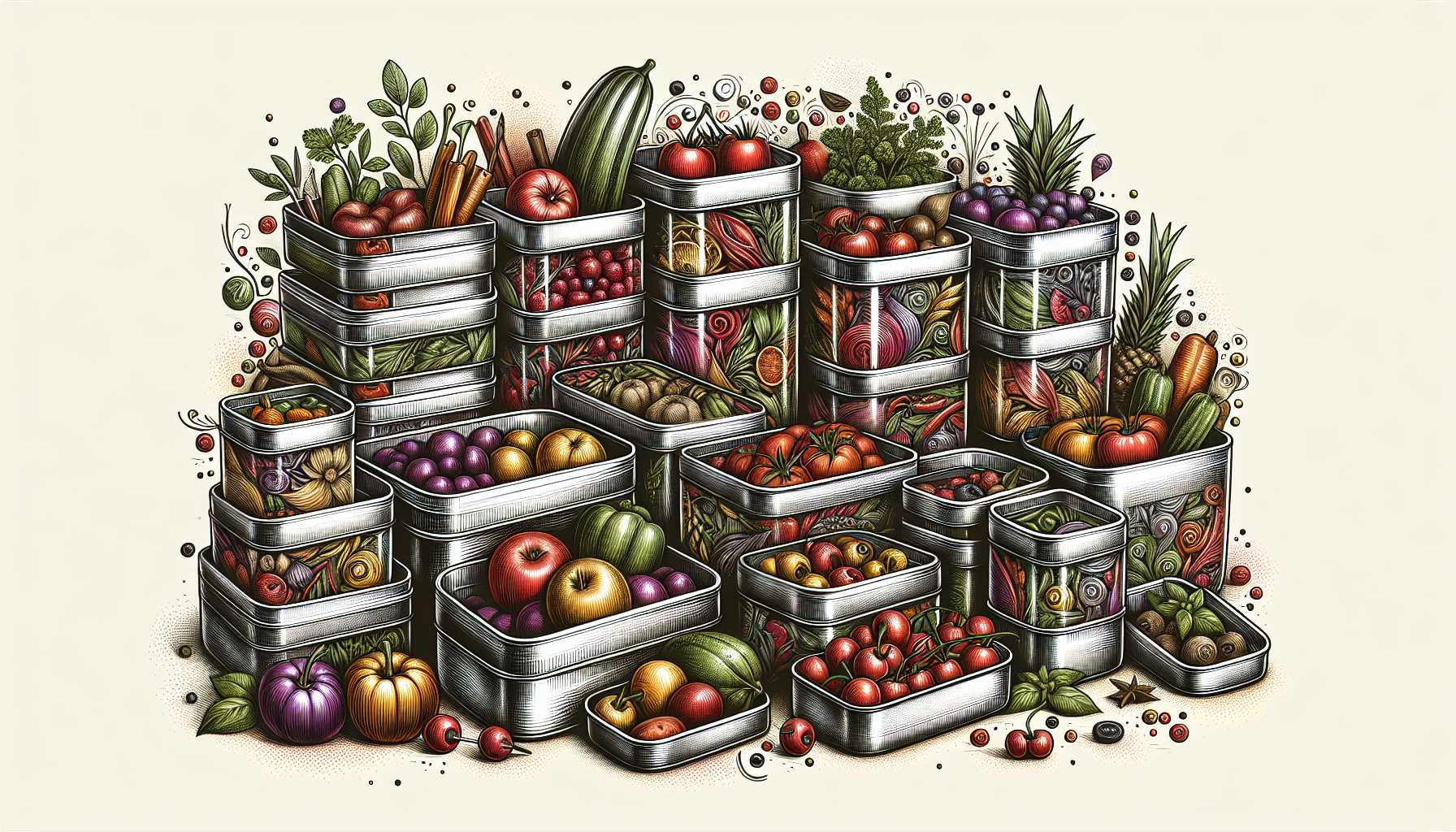
Safety is a top concern in food storage, and stainless steel is a material known for its safe usage. But not all stainless steel is created equal. For it to be deemed food-grade, it must offer robust durability and resistance to damage from extreme temperatures. It must also resist corrosion and rusting, which are essential for safe food preparation and storage.
The safety of stainless steel for food storage hinges on its quality and grade. High-quality, food-grade stainless steel containers do not contain toxic chemicals or contaminants that can leach into the food. Hence, you should always select food-grade stainless steel for food storage containers.
Food-grade stainless steel
Food-grade stainless steel is required to meet FDA guidelines to be used for food storage. These guidelines stipulate that the material must be:
- Durable
- Corrosion-resistant
- Non-absorbent
- Non-porous with a smooth finish for ease of cleaning and sanitization
This makes stainless steel an excellent alternative to plastic containers, which can leach harmful substances into food.
The risk of heavy metals like nickel and chromium leaching from stainless steel containers into food is minimal, especially when using high-grade stainless steel designed specifically for culinary usage.
High-quality stainless steel
High-quality stainless steel for food storage contains at least 10.5% chromium and less than 1.2% carbon to ensure corrosion resistance. The exceptional longevity, corrosion resistance, and lack of reactivity with foods make stainless steel food containers a reliable choice.
Moreover, choosing stainless steel containers supports environmental sustainability due to the material’s 100% recyclability, which helps to minimize plastic waste.
Austenitic stainless steel
Among the different types of stainless steel, austenitic stainless steel is the most commonly used type in the food-processing industry. This is because of its:
- High corrosion resistance
- Nonmagnetic nature
- Ductile nature
- Durability
It cannot be hardened by heat treatment, further enhancing its utility in food storage.
Two grades of austenitic stainless steel stand out when it comes to food storage - grade 304 and grade 316. Grade 304 stainless steel, also known as ‘18-8 stainless steel’, comprises 18% chromium and 8% nickel, making it a standard option for various food storage applications.
On the other hand, grade 316 stainless steel, one of the stainless steel alloys, includes 16-18% chromium, 10-14% nickel, and 2-3% molybdenum, offering enhanced protection against high salinity or acidity, crucial for certain food products.
Comparing Stainless Steel with Other Food Storage Containers
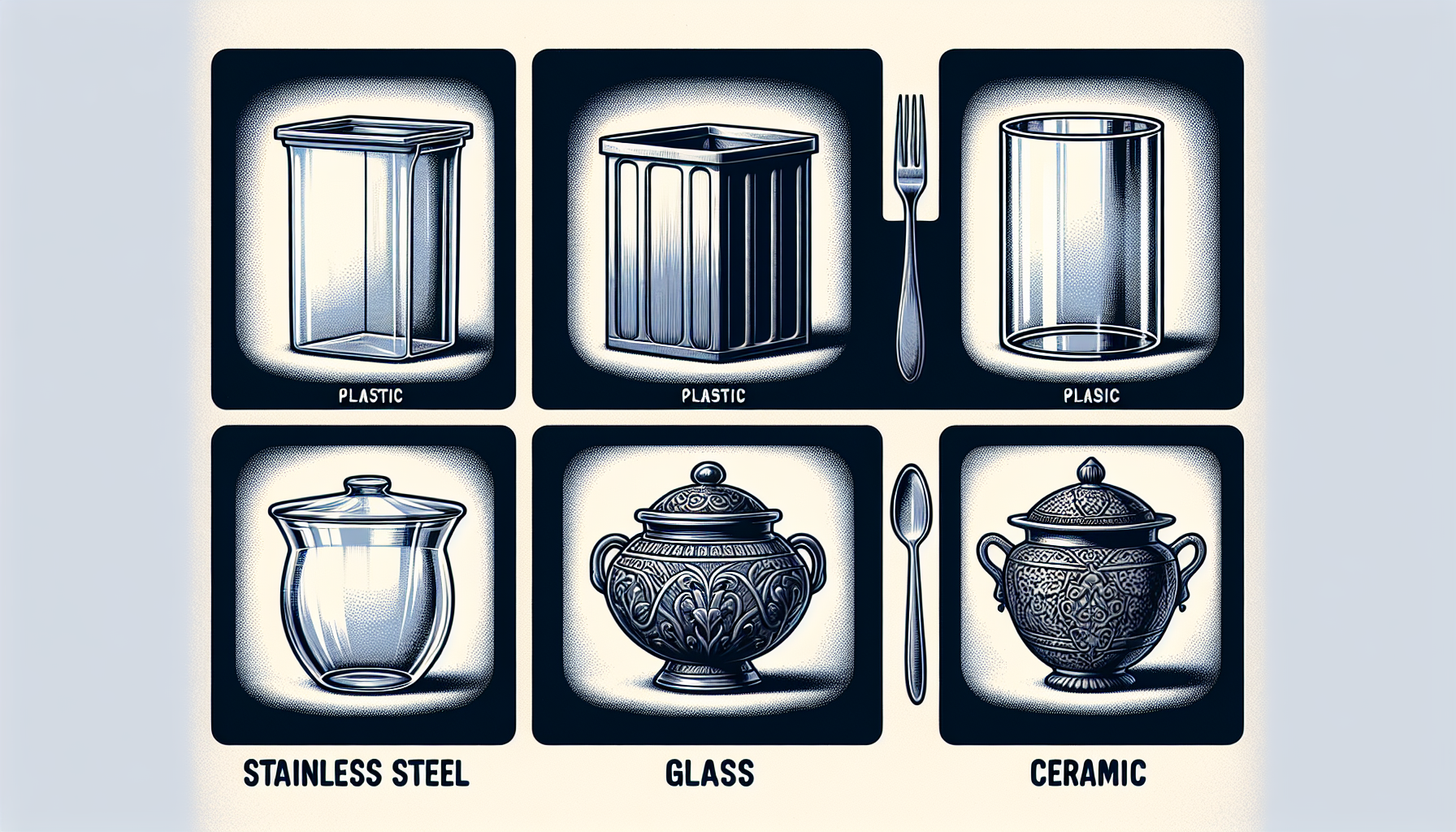
Let’s examine how stainless steel containers, a commendable choice for food storage, stack up against other popular containers such as plastic, glass, and ceramic.
Plastic containers
Plastic containers are lightweight and easy to carry, but they have their own set of drawbacks. For instance, they are more likely to retain odors over time, unlike stainless steel containers which are generally more resistant to odor retention.
Furthermore, stainless steel containers, unlike some plastic ones, don’t release harmful chemicals into food, making stainless steel containers safe and a better option for food storage.
Glass containers
Glass containers offer visibility of contents, which is convenient. However, they pose safety risks such as shattered glass, which is particularly problematic during transportation or handling due to their fragility. They also contribute to increased transportation costs and energy consumption due to their heavier weight.
Ceramic containers
When it comes to glass or ceramic containers, ceramic ones are stylish and come in a variety of designs, but they are more susceptible to breakage and are not as scratch-resistant as stainless steel. They should be washed with warm soapy water, then rinsed and dried to maintain their condition.
Although ceramic containers are generally dishwasher safe, it’s crucial to refer to the manufacturer’s instructions before cleaning them using a dishwasher.
Storing Different Types of Foods in Stainless Steel Containers
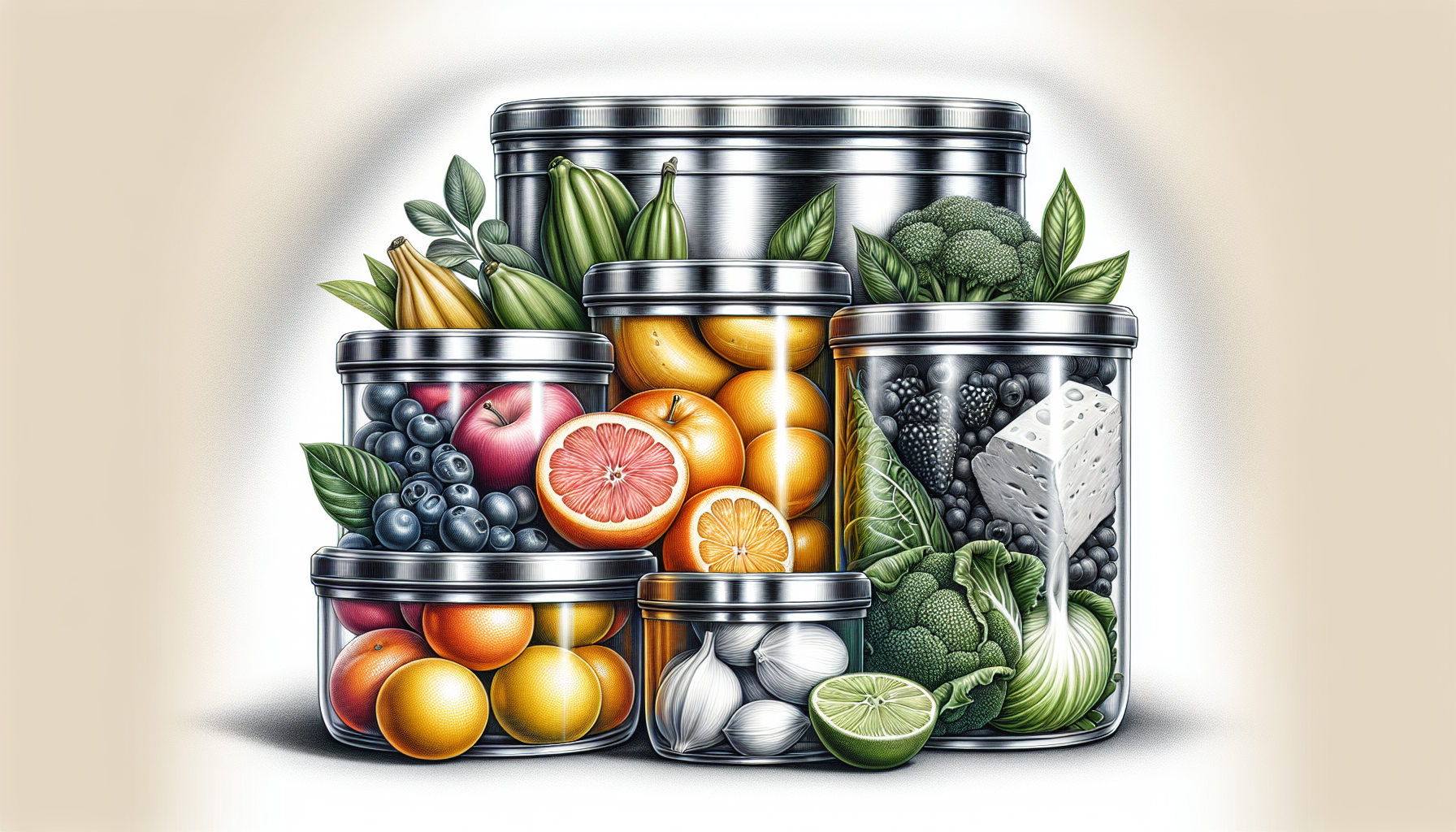
Having discussed the varieties of stainless steel and compared them with other materials, we can now consider the appropriateness of stainless steel containers for storing various food types.
The non-reactive nature of stainless steel ensures that it does not react with food, preserving the taste and nutritional value of the stored items.
Acidic foods
High-quality stainless steel containers are safe for storing acidic foods, avoiding concerns of chemical leaching present with certain plastics. The corrosion-resistant properties of stainless steel make it generally safe for storing acidic foods.
Grades 304 and 316 of stainless steel, particularly 316 with superior corrosion resistance, are most appropriate for storing foods with high salt or acid content.
Alkaline foods
Alkaline foods can react with certain types of stainless steel, causing discoloration and potential deterioration of the container materials. Prolonged storage of alkaline foods in stainless steel can lead to these negative reactions becoming more pronounced, potentially compromising the food’s flavor and safety.
Nickel-free stainless steel, like grade 430, is often recommended for storing alkaline foods to avoid these chemical reactions.
Hot food and leftovers
Stainless steel containers are capable of maintaining the temperature of stored food, including hot food items. The heat resistance capabilities of stainless steel contribute to its efficacy in preserving the desired temperature of hot foods.
Benefits of Using Stainless Steel Containers for Food Storage

Opting for stainless steel containers for food storage entails many advantages. These containers are known for their durability, heat resistance, non-reactivity, and ease of cleaning.
Durability
Stainless steel containers, a type of stainless steel kitchenware, are more durable than other materials like glass and ceramic, being less prone to damage such as chipping, cracking, or breaking. Food-grade stainless steel is designed to withstand repeated washing, rinsing, and normal kitchen wear and tear, which includes preventing chipping, scratching, pitting, and warping.
Heat resistance
Certain alloys of food-grade stainless steel become brittle at very low temperatures, but grades like 304 can resist oxidation in extremely high temperatures up to 1,697ºF, which surpasses most food manufacturing processes. Locking in the safety of hot foods, stainless steel containers can withstand high temperatures without releasing harmful chemicals into the food.
Non-reactivity
Corrosion-resistant high-quality stainless steel is essential for preventing harmful substances from leaching into food, underscoring its non-reactive nature. Contrary to common misconceptions, high-quality stainless steel does not react with food to alter its taste, and it is free of harmful chemicals like BPA, phthalates, and lead, often found in some plastics and ceramics.
Ease of cleaning
Food-grade stainless steel is designed for easy cleaning and sanitization while preventing bacterial growth due to its non-porous, smooth finish often achieved through methods like electropolishing. To avoid scratches and maintain the integrity of the surface, non-abrasive cleaners should be used, pads and harsh cleaners such as bleach should be avoided, and cleaning should follow the direction of the grain.
Proper Care and Maintenance for Stainless Steel Containers
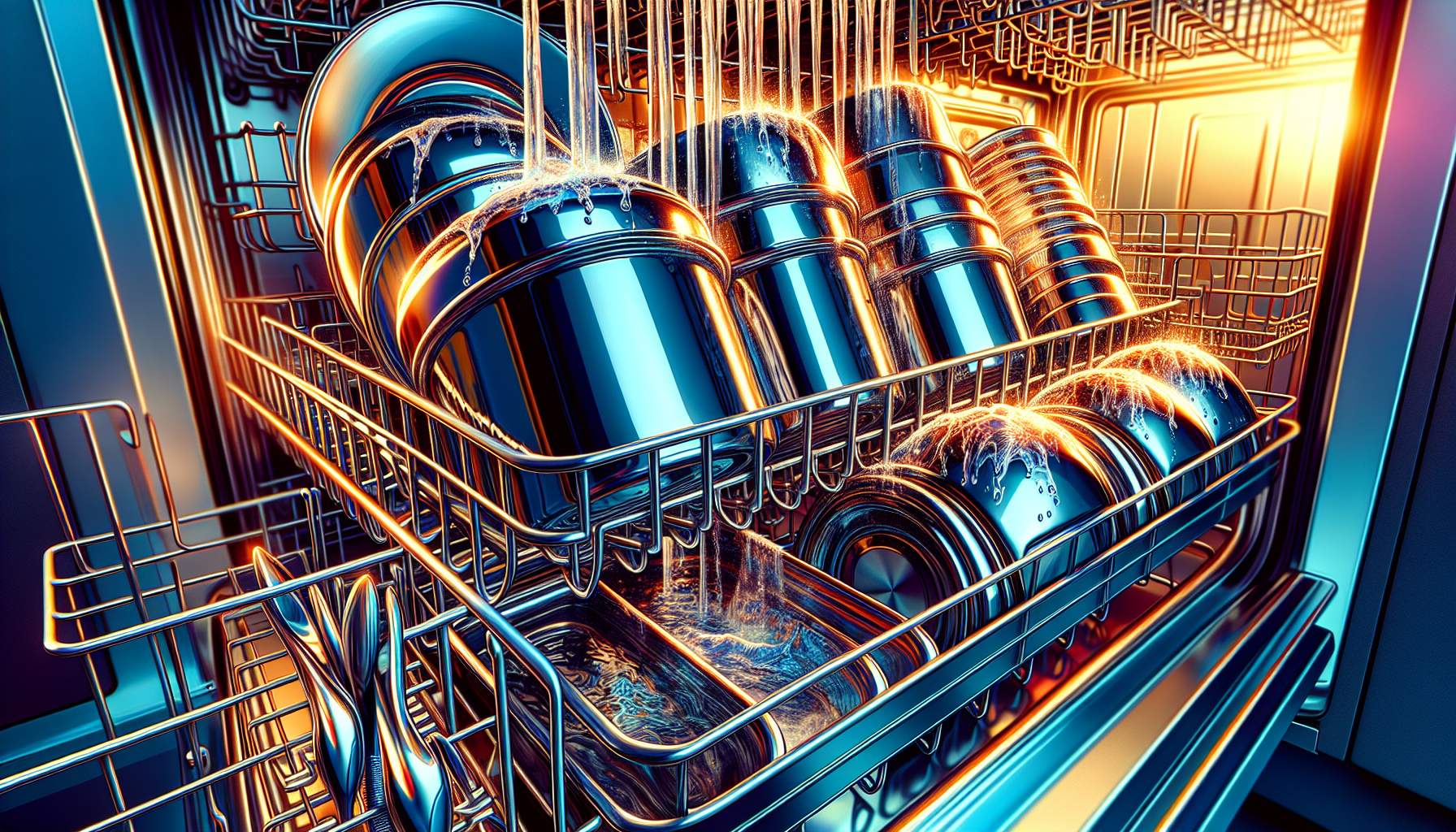
While stainless steel containers are known for their durability and easy maintenance, adopting appropriate care and maintenance practices can further extend their lifespan and preserve their appearance.
Dishwasher safe
Stainless steel containers are generally dishwasher safe, offering a convenient and easy cleaning option. Silicone lids that often come with stainless steel containers are also dishwasher safe and can alternatively be hand washed without the use of harsh chemicals.
Manufacturer's instructions
While stainless steel is generally easy to maintain, following the manufacturer’s instructions is essential for specific cleaning and maintenance tips to ensure the longevity of stainless steel containers.
Avoiding scratches and dents
To maintain the integrity and appearance of your stainless steel containers, avoiding scratches and dents is crucial. Never use steel wool or steel brushes as they can scratch the surface of stainless steel, potentially leading to rusting and staining.
Handle stainless steel containers carefully to prevent dents and maintain their structural integrity.
Common Concerns and Misconceptions about Stainless Steel Food Storage
Even with the numerous benefits of stainless steel containers, certain concerns and misconceptions persist about their use in food storage. Let’s tackle a few of these.
Metallic taste
One common misconception is that stainless steel containers can cause a metallic taste in food. However, this is unlikely if you’re using food-grade stainless steel and maintaining your containers properly.
Harmful substances
Another concern is about stainless steel containers releasing harmful substances. However, stainless steel containers are inherently BPA-free, preventing harmful chemicals from contaminating food.
Potential allergens
Some people might be worried about potential allergens associated with stainless steel. However, stainless steel is generally considered to be hypoallergenic and is rarely associated with allergic reactions.
Choosing the Right Stainless Steel Container for Your Needs
When selecting the appropriate stainless steel container, consider factors like size, shape, and specific features that suit your needs.
Travel mugs
When selecting a stainless steel travel mug, consider its size and shape, with compact designs for short trips and larger ones for longer commutes, ensuring it has a leak-proof lid.
Kitchen storage
For kitchen storage, stackable stainless steel containers can save space and keep countertops and pantry shelves neat and organized while storing food.
Leak-proof containers
For leak-proof containers, double-walled insulation or vacuum-sealed technology is key to keeping contents at the desired temperature. Some stainless steel kitchen storage containers feature see-through lids or windows, offering the convenience of content visibility without the need to open them.
Summary
In summary, stainless steel containers are a safe, durable, and eco-friendly option for food storage. They offer numerous benefits such as non-reactivity, heat resistance, and ease of cleaning. With proper care and maintenance, they can provide long-term service, making them a cost-effective choice in the long run.
Frequently Asked Questions
What is the best material to store food in?
The best materials to store food in are non-toxic materials such as glass, stainless steel, or ceramic. These containers should also have an airtight seal to prevent bacteria and air from getting in.
Is it OK to store food in metal containers in the fridge?
It is generally not recommended to store food in aluminum or copper containers in the fridge as they can cause discoloration and leeching. It's better to use 100% stainless steel containers for storing food in the fridge.
Does stainless steel alter the taste of food?
No, high-quality stainless steel does not react with food to alter its taste. Therefore, you can confidently use it for cooking without affecting the flavor of your food.
Can stainless steel containers be cleaned in a dishwasher?
Yes, stainless steel containers can typically be cleaned in a dishwasher. It is important to check the manufacturer's recommendations for specific containers.
Can acidic foods be stored in stainless steel containers?
Yes, high-quality stainless steel containers are safe for storing acidic foods. Stainless steel doesn't react with acidic foods, making it a suitable option for storage.
You Might Also Like...
